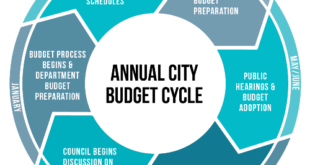By Jim Pumarlo
Crime and public safety are garnering more headlines across the country. Law enforcement and racial disparities in the criminal justice system are under increasing scrutiny. Newspapers play a key role in examining the dynamics in their own communities.

But what’s happened to police logs, the most basic of public safety reporting? Where are the regular records of traffic citations, thefts, property damage, burglaries and much more?
Police logs easily generated the most calls during my tenure as editor. Traffic citations probably topped the list. Nobody likes being linked to a police report – whether it’s something as common as speeding or a citation that carries greater stigma, such as a DWI.
We regularly connected with local law enforcement. We routinely reviewed all initial complaint reports. The documentation was part of the menu of public records that readers expected to see in our newspaper.
We also believed the information was valuable to readers in terms of public safety. Is a neighborhood experiencing a rash of vandalism? Are DWIs on the rise? Should residents be on the lookout for another scam artist? Are certain crosswalks particularly dangerous? Has a neighborhood become a haven for narcotics? Is there a pattern to a rash of business burglaries?
No doubt, traffic citations are among the most worrisome and embarrassing to the violators. A youth is afraid he’ll lose his job. A teacher is concerned how she can explain a speeding ticket to students. An elderly woman is flustered by her first-ever ticket. A coach dreads facing his players after getting ticketed for a DWI.
Adding to the frustration – and often anger – of the accused is the lag time between when a ticket is issued and when the court disposes of a case. The delay can be weeks, or even months, depending on circumstances.
We believed both reports were newsworthy. For example, police might break up a neighborhood disturbance and issue several tickets. The community should be apprised immediately. It’s equally newsworthy to follow a case to see what penalties are assessed.
With the increased level of crime across the country, it’s discouraging to see many newspapers put fewer resources – or, at minimum, less effort – into monitoring police logs. For those reports that are published, one must ask in many instances: What’s the value?
Some newspapers simply copy and paste an agency’s computer printout. It may provide a glimpse of a department’s activity – but little else. No names. No addresses. The reasons for a call are nondescript: driving complaint, narcotics, domestic, traffic stop, noise, suspicious. No indication if arrests were made.
Some newspapers will translate the logs into their own reports, but the vagueness is alarming. A bike theft on Bush Street. A local business reports a padlock broken and items stolen. An employee theft on the 14000 block of Dellwood Drive. Again, what’s the value?
Most glaring is the anonymity of the reports – the lack of the five Ws and H of basic journalism. Reports are meaningless and do nothing to alerting a neighborhood, a community to public safety issues.
Law enforcement undoubtedly is spoon feeding information, selectively deciding what they believe is in the best interests of the public. They give little attention to the fact that most of the nuts and bolts of police reports – names, addresses, specifics of call – is classified as public by law. Their rationale? Adhering to their own rules makes their jobs easier; they won’t get the angry phone calls asking why they released the information to the newspaper.
Even more discouraging is that many editors apparently share a similar sentiment. They don’t press for substantive details. Their rationale? Let’s keep the reports vague and not rile readers.
The dangers to this lack of aggressive reporting are obvious.
First, computer logs likely are transmitted electronically with little or no contact with anyone at the newspaper. Reporters do not develop any relationship with folks at the cop shop. They miss the opportunity to pick up and follow up on spot news, in-depth reports, feature stories and other substantive content for the newspaper.
Second, law enforcement will soon consider it standard operating procedure: Give the newspaper as scant reports as possible. That unfortunately is what many departments are taught. I well recall an officer in my hometown who became the primary contact on our daily rounds. He had just returned from training at the FBI Academy at Quantico, Va. His marching orders were very clear, as he was proud to tell us: Give the newspaper only the information he believed should be shared. We regularly challenged him, reminded him what the law dictated, and we eventually got the information – but it was an ongoing struggle.
Readers frequently asked that a public record be withheld. It might be a marriage license, divorce proceeding or ambulance run, but tickets were most commonly the concern. Some reasons were had more merit than others.
In the end though, each person was seeking special treatment. Each was asking the impossible because our policy was that we could not pick and choose. Going down that path would place us in the position of being judge and jury – to determine that one person’s plea was more worthy than another’s. And we’d never know all the facts.
The simplest and fairest policy is to treat all public records as just that – public – in the belief that openness serves the greater number of people over the greatest period of time. At its foundation, police logs provide a pulse of public safety in a community.
Jim Pumarlo is former editor of the Red Wing (Minn.) Republican Eagle. He writes, speaks and provides training on community newsroom success strategies. He is author of “Journalism Primer: A Guide to Community News Coverage,” “Votes and Quotes: A Guide to Outstanding Election Coverage” and “Bad News and Good Judgment: A Guide to Reporting on Sensitive Issues in Small-Town Newspapers.” He can be reached at www.pumarlo.com and welcomes comments and questions at jim@pumarlo.com.
 Nevada Press Association The best in Nevada journalism since 1924
Nevada Press Association The best in Nevada journalism since 1924



